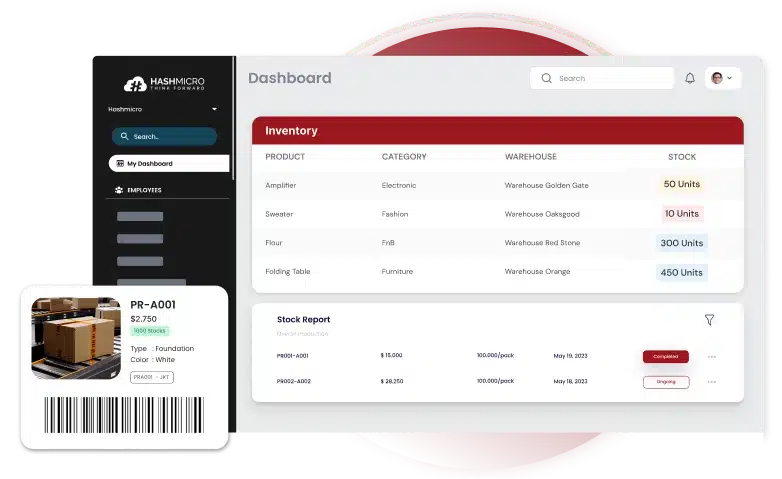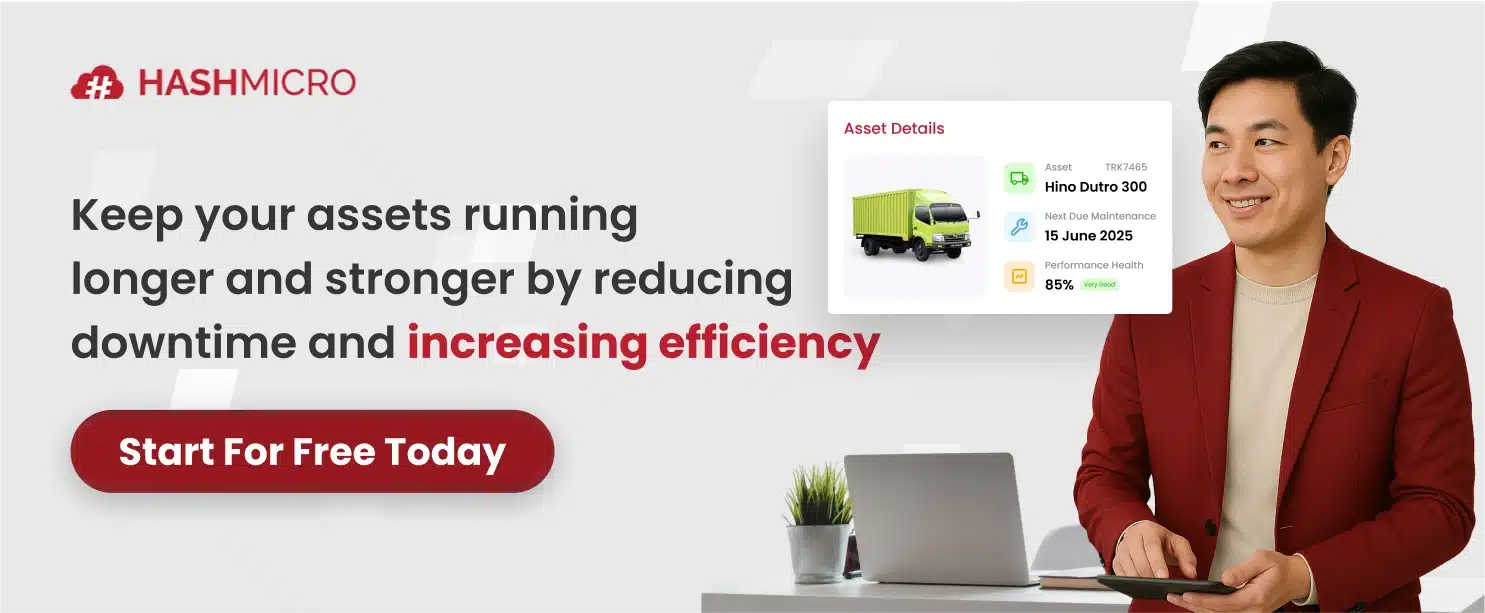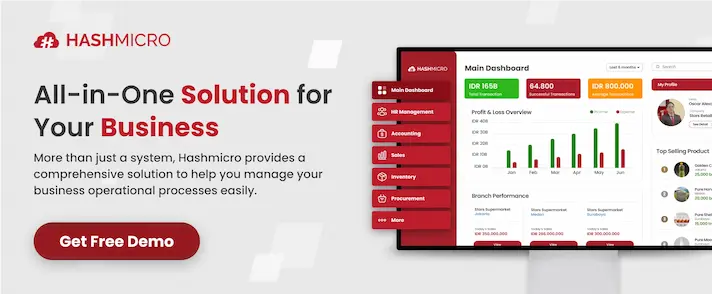Retailers often face an uphill battle when it comes to managing their assets efficiently. From inventory tracking to equipment maintenance, every misstep can result in operational headaches. Keeping things running smoothly is a constant challenge, especially with so many moving parts.
The stakes are high. Poor asset management can lead to stockouts, excess inventory, or unexpected equipment failures, which also impact day-to-day business. But what if there’s a way to handle all the problems with minimal issues and turn these challenges into opportunities?
With a robust asset management system, you can optimize resource use, prevent loss, and streamline operations. The result? Less stress, more efficiency, and a significant boost to your profitability.
This article will cover retail asset management, from the types to how to implement it effectively in business. Let’s explore deeper to equip you with the best strategies to manage your assets!
Key Takeaways
|
What is Retail Asset Management?
Retail Asset Management (RAM) is a comprehensive approach to managing a retailer’s assets, which include inventory, real estate, financial assets, and technology. Its primary goal is to maximize the value and efficiency of these assets, ensuring that they contribute positively to the retailer’s overall performance.
Effective retail asset management also involves leveraging technology to enhance asset visibility and control. Advanced tools and systems, such as cloud-based solutions and real-time tracking, enable retailers to monitor asset performance, identify inefficiencies, and make data-driven decisions.
Types of Retail Asset Management
There are several key types of retail asset management, each focusing on different aspects of a retailer’s operations:
- Inventory Management: This involves maintaining optimal inventory levels to ensure products are available when needed without overstocking. Techniques include Just-In-Time (JIT) inventory and ABC analysis.
- Supply Chain Management: This focuses on coordinating the flow of goods from suppliers to customers, ensuring timely delivery, and minimizing costs.
- Fixed Asset Management: This entails tracking and maintaining long-term assets such as POS systems, store fixtures, and vehicles. Using fixed asset management software helps retailers schedule maintenance, monitor depreciation, and extend the lifespan of these critical assets.
- Financial Asset Management: This involves overseeing financial investments and resources, including budgeting, forecasting, and ROI analysis.
Each type plays a vital role in ensuring the overall efficiency and profitability of a retail business.
Also read: What is an Asset Management System? Its Benefits & Features
Why is Asset Management Important for Retail Business?
![]()
Asset management is crucial for retailers who are looking to manage their assets effectively across all their stores and maximize profits. Ultimately, good retail asset management provides control and insight into every aspect of a store’s assets.
Here are six main reasons why proper asset management is crucial for every retailer:
1. Optimize Resource Use and Prevent Loss
Smart asset management lets you get the most out of your resources. It ensures your assets are not idle or overworked, saving you money on unnecessary purchases. Furthermore, asset tracking tools like barcodes or GPS make it easy to know where everything is at all times.
2. Simplify Inventory Tracking and Classification
Asset management makes tracking products a breeze. With unique product IDs and supplier details, you can easily distinguish similar-looking items. It also helps you categorize products based on sales, so you can focus on what’s popular and profitable.
3. Forecast Accurately to Meet Demand
Ever worried about overstocking or running out of key products? With asset management, you get valuable sales insights to predict what you’ll need and when. This ensures you reorder just in time, keeping shelves stocked without tying up cash in excess inventory.
Your customers stay happy, and your budget stays on track!
4. Stay Compliant and Avoid Risks
Compliance can be tricky, but proper asset management makes it much easier. By tracking and maintaining your assets, you ensure everything meets legal and safety standards, reducing the risk of fines or penalties. It’s a straightforward way to keep your business safe and running smoothly.
5. Boost Customer Satisfaction with Better Visibility
Nothing’s worse than sending damaged goods to a customer. Asset management tools help you track the condition of every product, ensuring only the best make it to your customers. You’ll know exactly what’s available, what’s in good shape, and what needs attention.
6. Extend Asset Lifespan with Regular Maintenance
Regular upkeep is the key to longer-lasting assets. Asset management systems remind you when repairs or maintenance are needed, helping extend the life of your equipment. By keeping everything in top shape, you reduce the need for replacements, save money, and operate more sustainably in the long run.
Challenges Retailers Often Face in Asset Management
Retail asset management comes with its unique set of challenges. Here are some of the key difficulties retailers often face:
1. Keeping track of numerous assets
Retailers often manage numerous assets, from inventory and equipment to IT hardware. With so many items to monitor, keeping an accurate, real-time record of where assets are, their condition, and usage can be tough. Mismanagement can lead to loss, theft, or duplication of purchases.
2. Preventing theft and loss
Smaller retail assets, like electronic devices and handheld scanners, are often vulnerable to theft or misplacement. Implementing effective tracking measures can be challenging, especially in high-traffic stores. Without proper monitoring, retailers can suffer significant financial losses due to theft and lost assets.
3. Climate change and environmental risks
According to the United Nations, climate-related disasters increased by 83% from 2000 to 2020, with 2023 being the hottest year on record. Climate change poses multiple risks to retailers, including potential damage to physical assets like stores and warehouses, delivery disruptions, supply chain uncertainties, and rising insurance costs.
4. Business cost increase
A significant 68% of retailers believe climate change will substantially increase business costs over the next five years, rising to 74% among respondents from the Middle East, Africa, and Asia (MEAA) regions. These environmental risks necessitate additional investments in asset protection and adaptation strategies to mitigate damage.
5. Accurate forecasting amid uncertainty
With rising economic and environmental uncertainties, accurately forecasting inventory needs is more challenging than ever. Retailers must rely on advanced asset management systems to predict stock requirements and avoid overstocking or stockouts while remaining adaptable to rapid changes in consumer demand.
Overcoming these challenges requires a well-thought-out asset management strategy, effective use of technology, like asset management software in Singapore, and ongoing staff training to ensure smooth operations and optimal asset use in retail environments.
Tips for Effective Retail Asset Management

Effective asset management can be a game-changer for retail businesses looking to boost efficiency. Here are some practical tips to help you get started:
1. Use real-time tracking systems
Let’s face it: losing track of inventory or equipment is every retailer’s nightmare. That’s where RFID tags, barcodes, and GPS tracking come in. You’ll know exactly where your assets are, whether it’s on the sales floor or in the warehouse.
And it’s not just about knowing the location; these systems automatically update your stock levels. No more manual counting or guessing games.
2. Automate your maintenance schedules
Nobody wants to deal with broken POS system right when the store is busiest. Automated maintenance schedules can save you from that headache. Let the system do the work—track equipment usage and send alerts when it’s time for a checkup.
Trust us, regular maintenance not only extends the life of your assets but also keeps your business running smoothly.
3. Classify and categorize your inventory
Here’s the deal: not every product deserves equal attention. Use the 80/20 rule—80% of your revenue usually comes from 20% of your products. Focus on identifying and prioritizing those bestsellers. By categorizing inventory based on sales performance, you free up time and resources to keep the high-demand items in stock.
4. Prepare for climate risks
Yes, climate change is real, and it’s impacting retail. Think about what would happen if a storm damaged your warehouse. Implement climate-resilient infrastructure and have a backup plan, like alternate storage or delivery routes.
Review your insurance policies regularly to make sure you’re covered for climate-related risks. Better safe than sorry, right?
5. Conduct Regular asset audits
You can’t manage what you don’t measure. Regular asset audits are essential to catch discrepancies, theft, or loss early. For example, doing monthly stock audits helps you identify shrinkage issues and act fast to fix them.
It’s not just about keeping an eye on your products; it’s about understanding what’s actually happening on the ground.
6. Integrate your systems for better visibility
Running separate systems for inventory, sales, and supply chain management? It’s time to connect the dots. Integrating these systems gives you real-time visibility into your entire operation.
For example, when stock levels fall below a set threshold, an automated system can reorder from suppliers without you lifting a finger. That’s how you prevent disruptions and keep things moving smoothly.
Elevate Your Asset Management in Retail with Comprehensive Asset Management Software

We’ve all been there: dealing with inventory discrepancies, unexpected equipment breakdowns, and assets you can’t seem to track. These little issues add up, which costs time and money. But what if managing your assets didn’t have to be such a headache?
HashMicro Asset Management Software makes this a reality. It’s designed to fit right into your current operations, simplifying tasks and giving you complete control over your assets. Whether you’re a small retailer or a large chain, this software can help simplify your processes, boost efficiency, and ultimately improve your bottom line.
- Asset Stock Take with Barcode: Forget about manual stock counting and errors. With barcode scanning, you can instantly report the status of each asset Now, you’ll always know what’s in stock and where it’s located.
- Preventive Maintenance Scheduling: No more surprise breakdowns during peak hours! This feature lets you plan and schedule maintenance for crucial equipment to avoid unexpected downtime.
- Asset Maintenance Budget: Are you worried about overspending on repairs? Manage and track your maintenance budget effortlessly. This feature helps you allocate funds for each asset or asset group so you can always stay on top of costs while keeping everything in working order.
- Asset GPS Tracking: Do you have delivery vehicles or mobile assets? Keep tabs on them with real-time GPS tracking. You’ll know the exact location of your assets at all times, reducing the risk of theft and improving delivery efficiency.
- Parent & Child Asset Management: Managing complex store fixtures? Organize them using the parent-child asset structure. For example, track a shelving unit (parent) along with its individual components like shelves, signage, and lighting (child assets).
- QR Code Scanning for Facilities Requests: Got a broken shelf or malfunctioning equipment? Just scan the attached QR code to request repairs instantly. This feature streamlines the maintenance process, reducing downtime and keeping your store in tip-top shape.
Conclusion
Retail asset management optimizes a retailer’s assets efficiently (inventory, properties, finances, and technology). It provides a holistic view of operations, which helps prevent losses and improves customer satisfaction. With the right strategies, retailers can forecast accurately and extend asset lifecycle.
For Singaporean retailers, managing assets doesn’t have to be a struggle. HashMicro’s Asset Management Software offers a tailored solution to simplify operations and reduce inefficiencies. Its features, like barcode stock-taking and preventive maintenance, keep your assets in check.
Whether you’re running a small store or a large retail chain, this software adapts to your needs. HashMicro provides real-time tracking, budgeting tools, and seamless facility management with QR code scanning.
Equip your business with the right tools to boost productivity, reduce costs, and focus on what truly matters: growing your bottom line. Try the free demo now!
Warning: Undefined array key "med" in /home/hashmicr/public_html/blog/wp-content/plugins/insert-headers-and-footers/includes/class-wpcode-snippet-execute.php(419) : eval()'d code on line 281

FAQ About Retail Asset Management
-
What is the difference between retail and retail management?
Retail management involves overseeing the daily activities of a retail business, including sales, inventory, customer service, marketing, and staff relations, while developing a strategy that aligns with the retailer’s goals.
-
What is retail KPI?
To get a clear picture, track Key Performance Indicators (KPIs) for your retail business. Monitoring these specific metrics across both online and in-store sales over time provides measurable insights into your business’s performance.
-
What does retail management deal with?
Retail management is about monitoring various aspects of a store to ensure smooth and successful operation, involving a range of tasks that keep the store running efficiently.
-
What does a retail manager do every day?
Retail managers are tasked with driving revenue and profits while developing strategies for business growth, such as maintaining stock of popular items and setting up product displays to attract customers.














